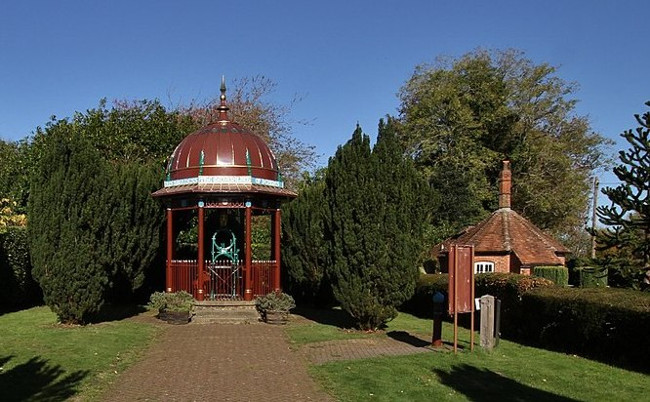This article originally appeared in The Historical Medal Journal No.2,
June 2020 *
|
THE MAHARARAH’S WELL AND ITS MEDAL
The
background is that in the mid-19th century the local squire’s fifth
son, Edward Reade, was a high-ranking civil servant in Benares3
and as such became well acquainted with His Highness Ishree Pershad Narayun
Singh, the Maharajah of Benares. Stoke Row is high in the Chiltern Hills and
the villagers relied on rain water for cooking, washing and general
cleanliness, whilst relying on beer for drink (even the children). In
summertime this often caused severe hardship as the rain ceased and the local
ponds dried up. The Maharajah’s people suffered similar difficulties so Reade
devised water schemes to alleviate this, during the course of which Reade
mentioned the problems suffered by the people of Stoke Row back home in
England. The Maharajah wished to provide for a charitable cause in England
and so it came to be that work started on Stoke Row’s well on 10th
March 1863, eventually reaching a depth of 300ft with a daily water yield of
between 600 and 700 gallons. A small well-keeper’s dwelling was built next to
the well and in accordance with Indian custom, land was purchased in 1866
adjacent to the well for an orchard, in order that the Keeper could sell
fruit to provide for a small income. Also in accordance with Indian
tradition, the only animals allowed in the orchard were cattle, the cow being
sacred to Hindus. Further celebrations were funded by
Ishree in 1872 to mark the recovery of the Prince of Wales from typhoid, and
this is also commemorated on the medal. He sent the vast sum of £200 and
provided 149 village cottages with half a pound of tea, one pound of sugar, two
loaves of bread, two pounds of bacon and ‘a good pair of blankets’ marked
Ishree. Additionally a munificent lunch was served to local gentry and then
about 150 labourers. Sometime in 1872 or soon afterwards,
it was decided to strike a medal for both events. From a letter held in the
Oxfordshire Archives4 it appears that a London medallist was
considered too expensive, so one Charles Osborn of Birmingham was entrusted
with the commission. However Forrer (Biographical Dictionary of Medallists)
has no record of Charles Osborn and the medal has the name of the renowned
Joseph Moore.
It was suggested that the silver
medals be sold at 12/6d each, the bronze at 5/6d each, the white metal medals
at 6d each. White metal examples appear on the numismatic market from time to
time, but bronze and silver examples hardly ever. One can only speculate who
received the gold medal – quite likely the Maharajah himself. Further
generosity was provided to the people of Stoke Row to celebrate Queen
Victoria’s survival of an assassination attempt in 1882, but after the
Maharajah’s death in 1889 no further contact with Benares happened until
1964, when celebrations were held for the well’s centenary, attended by the
Duke of Edinburgh and Indian dignitaries from Varanasi. If any reader has the
chance to visit “The Maharajah’s Well” I recommend doing so, for it’s a
splendid historical and cultural anomaly, so out of time and place.
|
||||||||
|
Notes 1Brown, L., British
Historical Medals 1760-1960 (3 vols., London 1980-1995) Further
reading Spencer-Harper,
Angela, Dipping Into the Wells (Witney 1999), pp 36-48 *The Historical Medal Journal is the
annual publication of the Historical Medallion Society, which holds an annual
conference in Warwick Copyright 2020: all rights reserved |
||||||||
